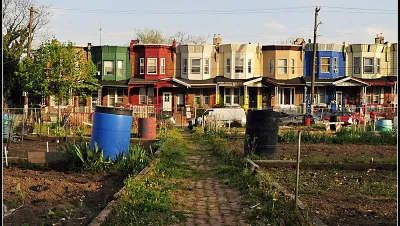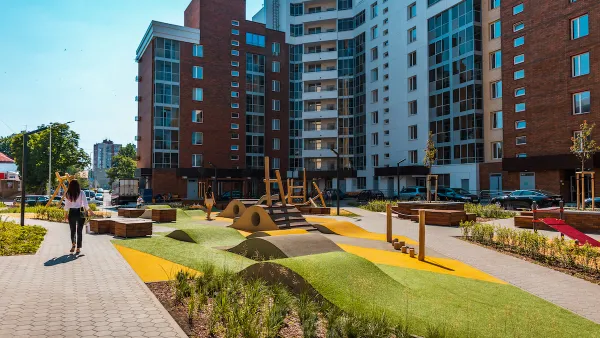Applying trauma-informed principles, reducing social isolation, and encouraging active living—how housing can be designed to promote good health.

A little more than a year ago, the COVID-19 outbreak was declared a global pandemic and government officials across the country ordered residents to shelter in their homes. While there’s been significant progress in the fight against the coronavirus with the development of advanced health treatments and the growing distribution of COVID-19 vaccines, many people are still spending most of their time indoors. However, data from the National Center for Healthy Housing shows that homes are one of the most dangerous places to be. Nearly 40 percent of residences have at least one health or safety hazard, and these issues tend to be costly to repair.
Among affordable housing advocates and health professionals, it’s commonly understood that removing health hazards like mold or lead can positively affect a residents’ health and well-being, but there are other, less familiar ways in which affordable housing can be designed to promote good health.
Shaping Healthy Affordable Housing
Dr. Lynne Dearborn, an architectural researcher and professor of architectural design at the University of Illinois at Urbana-Champaign, studies how housing and residential environments affect health. Dearborn and Dr. Sherry Ahrentzen of the University of Florida recently studied the extent that Low Income Housing Tax Credits (LIHTC)—the largest source of funding for affordable housing—helps shape healthy homes. They did this by reviewing Qualified Allocation Plans, or QAPs, which states develop annually to establish eligibility for receiving LIHTC funds.
Dearborn and Ahrentzen found that most states offer incentives to developers who site affordable housing in neighborhoods that have amenities to improve healthy living, but rarely do they require it.
Also, while most states have a least one criterion for addressing indoor air quality in their respective QAPs, few ...
FULL STORY: Housing Design That Advances Health

Analysis: Cybertruck Fatality Rate Far Exceeds That of Ford Pinto
The Tesla Cybertruck was recalled seven times last year.

National Parks Layoffs Will Cause Communities to Lose Billions
Thousands of essential park workers were laid off this week, just before the busy spring break season.

Retro-silient?: America’s First “Eco-burb,” The Woodlands Turns 50
A master-planned community north of Houston offers lessons on green infrastructure and resilient design, but falls short of its founder’s lofty affordability and walkability goals.

Test News Post 1
This is a summary

Analysis: Cybertruck Fatality Rate Far Exceeds That of Ford Pinto
The Tesla Cybertruck was recalled seven times last year.

Test News Headline 46
Test for the image on the front page.
Urban Design for Planners 1: Software Tools
This six-course series explores essential urban design concepts using open source software and equips planners with the tools they need to participate fully in the urban design process.
Planning for Universal Design
Learn the tools for implementing Universal Design in planning regulations.
EMC Planning Group, Inc.
Planetizen
Planetizen
Mpact (formerly Rail~Volution)
Great Falls Development Authority, Inc.
HUDs Office of Policy Development and Research
NYU Wagner Graduate School of Public Service




























